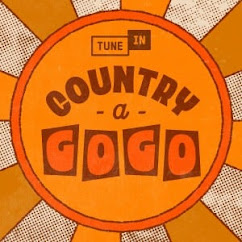The New Orleans of the West Coast!
That is what I thought after reading the fantastic "Riot On Sunset Strip" by Domenic Priore. A revised edition with a fantastic cover, pictures of the action and a story like no other.
The 1960s music scene in Los Angeles is prefaced with an old wild west tale of mobsters being run out of town, prohibition and fast money. This leaves the Sunset Strip area ready to be cared for by the burgeoning jazz and R&B scenes.
Famed vocalist Billy Eckstein broke the barriers of segregation at the clubs and the musician's union leading to hep cat jazz joints and the small club scene to flourish. Charles Mingus, Chet Baker, Gerry Mulligan and a host of other cool jazz and bebop swingers all made the strip home. Louis Prima and Keely Smith brought their hot New Orleans inspired swing to the Sunset Strip that led to crowds coming to dance and swing.
Also incredibly key to the scene, is the folk movement. The explosion of the folk scene is largely as a result of the R&B and rock 'n' roll scenes being destroyed by payola, death and racism. Protest and anger was to found in the words and music of Pete Seeger and Woody Guthrie. With the recent blacklist, oppressive racism, sexism and the Civil Rights movement about the explode, the time had come today.
The Strip catered to the surf scene and the R&B movement at the clubs. Many of the exciting hits came from Los Angeles during 1960-1963 era with The Beach Boys, The Pyramids, Thee Midnighters, The Platters and Sam Cooke all emerging from this early club scene.
 Five lads enter the picture in 1964 and by 1965 they take the Strip to the world. The Byrds had the genius combination of Beatlesque tunes, protest courtesy of Seeger and Dylan, the jazz cool, and a ringing 12-string guitar that are bells of euphoria. The band achieved number 1 on the charts with "Mr. Tambourine Man," which led to an explosion of similar folk-rock and garage-punk bands. The Leaves, The Turtles, The Doors, The Standells, The Seeds, Buffalo Springfield and most importantly Love all appear on the Strip.
Five lads enter the picture in 1964 and by 1965 they take the Strip to the world. The Byrds had the genius combination of Beatlesque tunes, protest courtesy of Seeger and Dylan, the jazz cool, and a ringing 12-string guitar that are bells of euphoria. The band achieved number 1 on the charts with "Mr. Tambourine Man," which led to an explosion of similar folk-rock and garage-punk bands. The Leaves, The Turtles, The Doors, The Standells, The Seeds, Buffalo Springfield and most importantly Love all appear on the Strip. The Strip is presented as a place where ideas are shared, bands are of relative equal footing, people dance together and the world is changing for the better. Folk-pop of the Mamas and Papas and Sonny and Cher sit right along explosive Stax revues with the Mar-Keys and the Thomas' and everybody digs. The art world, television and radio all explode with the sounds of Ravi Shankar, John Coltrane, Otis Redding, The Rolling Stones, productions by Jack Nitzsche and Phil Spector.
The Strip is presented as a place where ideas are shared, bands are of relative equal footing, people dance together and the world is changing for the better. Folk-pop of the Mamas and Papas and Sonny and Cher sit right along explosive Stax revues with the Mar-Keys and the Thomas' and everybody digs. The art world, television and radio all explode with the sounds of Ravi Shankar, John Coltrane, Otis Redding, The Rolling Stones, productions by Jack Nitzsche and Phil Spector.Trouble begins just as The Byrds hit number one with the Watts Riots in 1965, a result of neglect and racism from the city at large. This leads to a fearful and ridiculously paranoid city. Their policy appears to be wanting to stamp out any sign of integration or change. With the extremely rich Beverly Hills right next to the Strip, it was only a matter of time for the city to make changes. One way they begin to stamp out the scene is by attempting to close the clubs and build skyscrapers. The next stage is in 1966 to reenact old cabaret policies of dancing and curfews, leading to a sharp decline in the club's ability to draw crowds and maintain the momentum. This results in the riots on the Sunset Strip, which common to all riots, is caused mainly by police officers looking for trouble and dirt by instigating and escalating situations.
By 1967 the death knell is all but rung with the Monterey Pop Festival occurring in Northern California. Although largely the result of the excitement of the Strip, it leads to San Francisco to becoming the new center of action. With only Sly and the Family Stone reminiscent of the older Strip days of fun, dancing and togetherness. The rest of the scene is largely inward looking and snooty. Rolling Stone magazine rewrote history to change the perspective of what it means to be a musician and a consumer of records.
All these changes happen at the same time as the escalation of the Vietnam War, the wholesale of radio and television to bigger corporations, the slow collapse of the power of the union, and a renewed evangelical conservatism.
This was a fantastic read and a definite recommendation to anyone with any interest in the 1960s music scene and how the Sunset Strip was truly a revolutionary force of art and positive change. I was left feeling that this same story could be told today in the 2010s with the collapse of music venues, the snark of Vice, still blatant racism and xenophobia, NIMBYs and the rise of skyscraper living.
Read this book and get inspired to keep on keepin' on!




















0 Comments:
Post a Comment